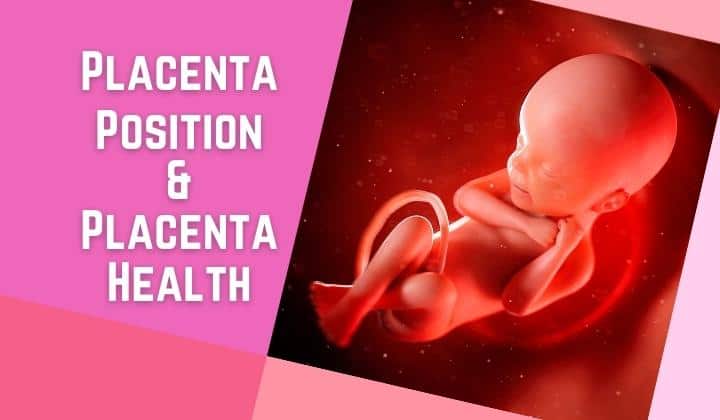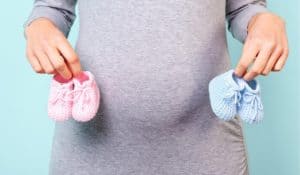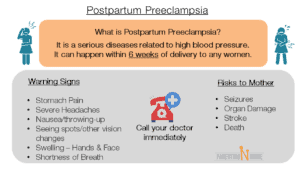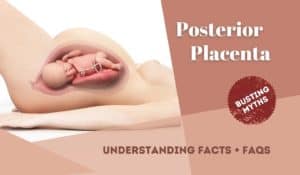Medically Reviewed by: Dr. Veena Shinde (M.D, D.G.O, PG – Assisted Reproductive Technology (ART) from Warick, UK) Mumbai, India
-
Author: Palak Thakkar
- >> Post Created: November 15, 2021
- >> Last Updated: April 28, 2024

When a woman gets pregnant, there are new things for her to learn every day; about the pregnancy – morning sickness, pre-natal screening…; the would-be baby, her ever-changing body, and everything that her body is doing for the unborn baby.
By now, your doctor might mention the words ‘Placenta’ and ‘Placenta Position’ a number of times. The Placenta is one of the most vital organ during pregnancy, and it is imperative that you understand everything about it, like position of your placenta – like fundal placenta (placenta on top), anterior placenta (Placenta in front), posterior placenta (placenta towards the back) and so on… and placenta health – placenta related complications and so on.
With this article, we aim to answer all your questions regarding placenta and how each placenta position influences your pregnancy journey and the delivery of your baby. That’s not all look at what all you can do to maintain placental health and what you need to avoid to stay away from complications.
Placenta Position - Table of Contents
What is Placenta?
A woman’s body is truly a biological wonder! When she conceives, her body changes in a number of ways to nourish and protect her growing baby in the womb.
One such important change that her body makes is the development of an organ called the ‘Placenta’ when she is 3 weeks into her pregnancy. It is developed from the fertilized ovum or egg. The organ can be detected through an ultrasound test at 12 weeks. The baby is connected to the Placenta through an umbilical cord for the supply of oxygen and nutrients required for it to grow. It also gets rid of the waste from the blood of your baby.
The placenta is one of the most vital organs during pregnancy, because apart from keeping the baby nourished and safe it also produces hormones that are essential during pregnancy. Estrogen, Progesterone and Lactogen – these hormones have an extremely responsible task of keeping the mother’s and baby’s blood separate to prevent infections.
Why does the placenta position matter?
After understanding the vital role of this organ in pregnancy, what position your placenta is in? – is another important subject that you need to understand.
Normally, the position of your placenta does not have any effect on the pregnancy or the baby, except if it is in a position where it blocks the cervix (opening of the womb); this position is called the Placenta Previa. If the placenta position in a pregnant woman is Placenta Previa then she has to be closely monitored and is likely to give birth through caesarean-section.
You can say that the placenta position can become a determining factor to know whether a vaginal or a C-section delivery is safer.
Further bear in mind the position of your placenta is something that happens naturally and it cannot be planned by you or your doctor. There are various stages for placenta development as well.
Placenta Position Diagnosis
How do you come to know what placenta position you have?
An ultrasound done around the level 2 of your mid-pregnancy ultrasound or anatomy scan, provides your doctor a clear indication of your placental placement. These scans happen generally around 20 weeks of your pregnancy. However earlier scans too can provide an indication of the placement of your placenta.
Different types of placenta positions
The egg implants itself within the uterus upon fertilization, and that’s where the placenta is positioned.
So, your placenta could be on the top of the uterus (fundal placenta) or on the back wall of the uterus (posterior placenta) or front wall within the uterus (anterior placenta) or even low lying placenta – towards the bottom (near the cervix or even over) etc…
However, the position of your placenta could change over time as the uterus expands and your baby grows. Your initial, screening/ultrasound scans between the 12th week and the 20th week can help determine the placenta position and its movements.
Here are the various placental positions which your placenta implants itself within the uterus:
Fundal Placenta
It is most common placenta implantation position, wherein the placenta is positioned on the top of the uterus. Complications in pregnancies with this position are negligible and is considered to be an ideal position for delivery.
However, research has found an increased connection between the fundal placenta and preterm premature rupture of membranes (PPROM), which means that there are higher chances of the water breaking before 37 weeks of pregnancy. The possibility of this happening is however just 3% of total pregnancies – which means PPROM happening while having a fundal placenta would be even a further minuscule percentage.
Basically the risk is that when the placenta is at the top of the uterus (fundal placenta), the placenta builds the weakest point of the membrane over the opening of the womb, which in turn could lead to premature rupture of membranes.
Anterior Placenta
When the placenta is located in front of the uterus, the position is called Anterior Placenta.
With Anterior Placenta come a few things which would feel different than other pregnant women, like delayed flutters or delayed fetal movements, difficulty in heart beat detection earlier on and so on.
Its not because there is anything wrong with you or your baby. Its just the placement of your placenta is right in the front of your uterus which acts as a cushion causing you to feel slow or mild baby movements in the initial phase of your pregnancy. The same is true when it comes to detecting your child’s heartbeat as well.
Posterior Placenta
In case of posterior placenta, the placenta is positioned towards the back of the uterus. In this position, the baby’s movements can be felt a little more effectively and earlier in pregnancy. This placenta position also helps the baby be in the best position for birth.
However, as the uterus’ back wall is thicker and longer, the blood flow might not have the best efficiency, which might raise the risk of a preterm labor.
Lateral Placenta
When the placenta is positioned in the right or the left side of the uterus, it is known as lateral placenta positions. These 2 positions are also referred to as Right Lateral Position & Left Lateral Position respectively.
These positions are usually not common. In such cases, the baby gets constant blood flow from one of the uterine and/or ovarian arteries, along with some more from the other uterine artery.
This in turn can increase the risk of pre-eclampsia, caused by high blood pressure. Some research has also associated lateral placenta to higher chances of having a ‘breech baby’ – a baby who’s lying feet-first at the opening of the uterus, instead of the ideal head-first position.
Placenta Previa
Placenta Previa is one of the position that can truly be a cause of concern. It is rare, seen in roughly 1 out of 200 pregnancies. In this case, the placenta covers the cervix partially or completely. If the placenta covers the cervix completely, then a caesarean section is the only safe way to deliver the baby.
What can cause placenta previa?
Factors that can cause or increase the chances of placenta previa:
- If the age of the mother is over 35 years
- If the mother is pregnant with twins or multiples
- If you had Placenta Previa in a previous pregnancy
- If you had C-section in a previous pregnancy
- If you were smoking during pregnancy
Placenta previa can be checked through regular ultrasound scans or if there is maternal vaginal bleeding. If diagnosed with placenta previa, then an additional ultrasound scan will be required at 32-week gestation period to understand the severity of the condition and the possible ways to manage it in the third trimester.
The biggest risk with the placenta covering the cervix is major bleeding and that too without any warning. If diagnosed with the condition, the expectant mother will need to be on complete bed rest starting from 34 weeks, with or without any bleeding.
Note: Contact your hospital at the slightest bleeding. If there’s significant bleeding, then the baby might have to be delivered pre-maturely.
Read this next
Placenta Position & Placenta Health - Common FAQs
Q. Can the placenta position change in pregnancy?
The position of your placenta could change as the uterus stretches to make space for your growing baby. This is common and nothing to worry about as such.
So, whether you have a placenta posterior, anterior placenta or even low-lying placenta, the position of your placenta could change by the time of your delivery due to uterus expansion and your growing baby.
Q. How do you determine the placenta position?
The developed placental position is visible through an ultrasound by the 12th week of pregnancy. The position of the placenta at the cervix (whether it is covering the cervix partially or completely) can be determined at the 20th week ultrasound scan (also called Morphology Scan).
Q. How much does the placenta position matter?
If you have a posterior placenta, anterior placenta or even fundal placenta placement, then there isn’t generally a cause for concern. Nonetheless, in case you have placenta previa then there is something to be worried about as the placenta covers the cervix.
There is no medical cure for placenta previa, but treatments are present to ease the difficulties it may cause during pregnancy. Treatment can vary based on the placenta previa position, whether it is complete or partial (blocks cervix completely or partially), amount of bleeding, fetal position and gestational age. The most important diagnosis is complete best rest for the expectant mother and regular, close monitoring of the baby and the mother.
Q. What are the common placenta problems?
Placenta problems in pregnancy can cause heavy vaginal bleeding. Possible placenta problems can be placenta previa, placenta abruption, placenta accrete, and retained placenta.
- Placenta previa is a condition wherein the placenta completely or partially covers the cervix or the mouth of the womb. This placenta position is commonly seen in early pregnancy stages, but is usually fixed in the later stages, as the uterus grows. However, if the placenta previa prevails even in the third trimester, then C-section is the only way to deliver the baby.
It is important to note that this condition can result in heavy vaginal bleeding during pregnancy or even during birth. Effective management of the condition will depend upon –
- Amount of bleeding
- Whether or not and how swoon the bleeding stops
- The number of weeks into pregnancy
- Placenta position
- Baby’s health
- Placenta abruption is a condition when the placenta ‘peels away from the inner walls of the uterus’ before delivery. This will not only result in insufficient supply of oxygen and nutrients to the baby, but also heavy bleeding for the mother. This can give rise to an emergency condition, and hence, will need an early delivery.
- Placenta accrete is the condition when the placenta, which should separate itself from the uterine wall after delivery of the baby, continues to stay firmly attached to the uterus. This condition too can cause major blood loss during delivery. In extreme case, if the placenta grows through the uterine wall or overruns the muscles of the uterus, then the doctor will not only recommend a C-section delivery, but also the removal of the uterus after the baby is delivered.
- Retained placenta is a condition when the placenta is not delivered within 30 minutes of the baby’s delivery. This can happen due to two reasons – if the placenta is still stuck to the uterine wall or if it is unable to come out because of a partially closed cervix. This needs to be rectified urgently, as it can cause major blood loss or severe infection.
Q. How is the placenta delivered?
In what is called as the third stage of labor, the placenta is delivered after the baby. If the baby is vaginally delivered, then so is the placenta. Even after birth, the mother will continue to have mild contractions, for which the doctor might prescribe oxytocin (Pitocin) to continue uterine contractions and reduce postpartum bleeding.
The doctor might also massage the lower abdomen to urge the uterus to contract and get the placenta out. The mother may be asked to push once more to deliver the placenta if the childbirth has happened through the vagina.
In case of a C-section delivery, the doctor will remove the placenta during the procedure itself.
Once out of the body, the doctor will inspect the placenta to ensure that it’s intact and that none of its fragments remain in the body, as it can cause bleeding and infection.
Q. What affects placenta health?
Placenta health can be affected by a number of factors.
- Mother’s age: If the mother’s age is over 40 years, then some problems with placenta are common.
- High Blood Pressure
- Twin or multiple pregnancy: With more than one baby in the womb, some placental problems become common.
- Water breaking before labor: In the womb, the baby is kept safe in every way by a membrane (called amniotic sac) filled with fluid. If the sac leaks or breaks before labor, then it can cause some placental issues.
- Blood-clotting disorder
- Previous surgery on the uterus: If the previous pregnancy was through a C-section or any other surgery like the removal of fibroids has been performed on the uterus, then brace yourself for some possible placental complications.
- Previous placental problems
- Smoking or addiction to cocaine or other substances during pregnancy can cause placenta issues.
- Abdominal trauma: A shock or trauma to the pregnant abdomen by a fall or a blow can increase the chances of placenta abruption, wherein the placenta is separated from the uterus.
Q. How to reduce risk of placental problems?
Placenta issues cannot be avoided completely. However, there are certain ways to ensure a healthy pregnancy:
- Go for regular check-ups and ultrasound scans to determine the position and health of the baby and the placenta.
- Consult your doctor immediately to handle any other health condition like high blood pressure, diabetes, etc.
- Do not smoke or consume drugs.
- Eat healthy and stay active with regular walks or exercises as advised by your doctor
- Discuss the possible risks with the doctor to go ahead with an elective C-section.
- Inform the doctor about the following beforehand
- Placental problem in the previous surgery
- Any past surgery on the uterus
This way, the doctor will be able to guide the expectant mother better, reduce the possibility of suffering through the condition again, and monitor the condition of the mother more closely.
Q. What are the signs of a placenta problem during pregnancy? When to call the doctor?
Placental problems usually come without a warning and are mostly severe. Therefore, if a pregnant woman experiences the following, she should be rushed to the doctor –
- Vaginal Bleeding, irrespective of the amount
- Constant or fast contractions
- Reduced fetal movement
- Severe back pain
- Hard tummy that isn’t relaxing
Key Takeaway
The placenta and placenta position have an extremely vital role to play in the nurturing of the baby in the womb. Therefore, every mother should learn about it and never hesitate to discuss with your doctor about the slightest concern or query you have about your placenta health and placenta position.
After all the growth of your baby is related to not only your health but your placentas health as well.
Further remember placenta position happens naturally in your body wherever the egg implants itself after fertilization. You don’t have a control over. But understand what each position will definitely help you sail through your pregnancy.
So, understand the importance of placenta – after all, the placenta is the organ that joins the mother and the baby!
Happy Pregnancy!









I was looking for information on placenta position for my wife as doc said she has placenta previa.
Superb article. Nicely written for a layman to understand. Very helpful.
Thanks David for visiting and appreciating the article.
I am glad you found answers to your queries.
Usually I don’t read post on blogs, but I wish to say that this write-up very forced me to try and do so!